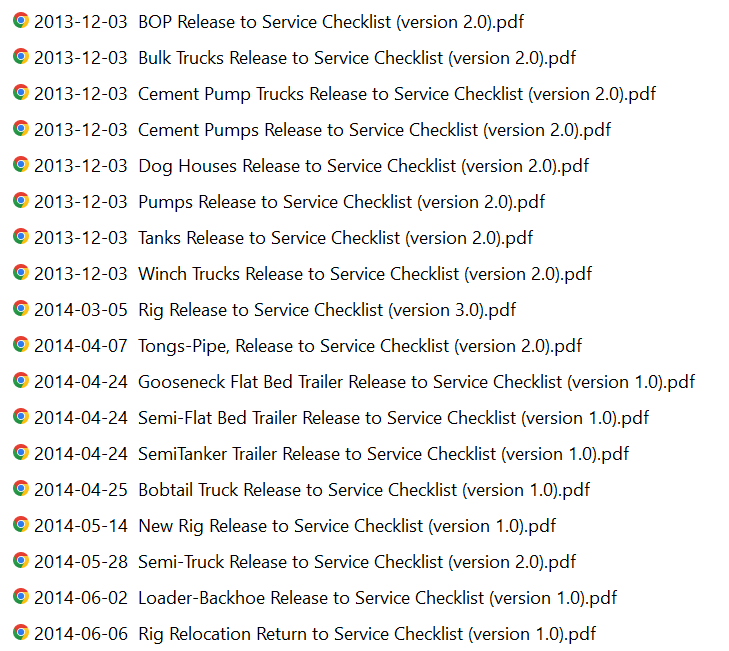Field Operations
Unlock Savings through Cross Departmental Opportunities
The page emphasizes the potential for cost savings and improved service levels through resource sharing and identifying similarities between different city departments.
For example:
- Smart meters in less dense areas might prove to be a cost-effective solution
- Maintaining expensive equipment within their warranty requirements
- Insurance costs reduction through a re-evaluation of risk profiles and maintenance
- Multi-certified equipment operators reduce backlog and queue times
- Location and placement of equipment nearer to needs can improve efficiencies
- Elimination of equipment and fleet usage for personal or non-authorized use
- Lean six sigma applies to operations: Reduce material waste, improve consistency
Operations vs. Back Office
Operations are typically distinct from back office (shared services) functions. The approaches to identifying cost savings and efficiency differ. Operations benefit from the “pay me now or pay me later” thinking.
Field operations often involve work outdoors or outside the central office, while back office functions are administrative duties that support the business from behind the scenes.
 Cost savings come from a variety of sources, including preventative measures, exceptional planning, equipment and personnel utilization, smart lease-purchase-repair decisions, and fair vendor agreements. Notably, a safety culture plays a crucial role in these cost-saving measures, underlining the importance of safety in operational efficiency and cost management.
Cost savings come from a variety of sources, including preventative measures, exceptional planning, equipment and personnel utilization, smart lease-purchase-repair decisions, and fair vendor agreements. Notably, a safety culture plays a crucial role in these cost-saving measures, underlining the importance of safety in operational efficiency and cost management.
To examine opportunity areas in Sallisaw, field operations and back office functions are different in that field operations involve work outdoors or outside the central office. In contrast, back office functions are administrative duties that support the business from behind the scenes.
Sallisaw’s City Orginances include subjects related to operations and support functions.
Operations: Utilities and Infrastructure
- Electric distribution
- Fleet maintenance
- Landfill disposal
- Municipal Airport
- Sanitation collection
- Streets
- Wastewater collection
- Wastewater treatment
- Water distribution
- Water treatment
Operations: Public Services
- Animal Control
- Parks
- Cemetery
- Pool
- Tree trimming
Equipment Maintenance and Repair

Browse an example Return to Service checklist. While his example is for an oilfield pump truck, similar checklists should be used for Sallisaw’s fleet and heavy equipment.
Return-to-service checklists assign accountability, ensure readiness-to-use, improve safety, and reduce equipment downtime.
I am not yet familiar with the maintenance and repair capabilities of Sallisaw. Regardless, though, throughout the mechanic’s shop, OSHA’s hierarchy of controls will come into play as a must do.
Creating the return-to-service documents (if they do not already exist) will take some time, but would be prioritized based on frequency of repair or cost of downtime.
I also don’t know the equipment owned and/or leased by the City. Several types are listed here with degree of difficulty to operate and operating risks.
When appropriate, equipment operator professionals benefit from cross-training on a variety of equipment types with the appropriate certifications (Certificate of Heavy Equipment Operations Level I & II) . Doing this minimizes queue time and delay if a main operator is absent.
Meter reading, water/gas/electric distribution, and DiamondNet, while different in focus, each of these have address and physical location requirements to perform their work well.
Possibly, there are cost savings opportunities through reductions in shared tasks, synergy in customer service calls, or through technology enhancement.
Each of these benefit from clear labeling, flexible maps, standard operating procedures, and contingency plans.
Practical and creative ways to reduce worker travel time, mitigate customer disconnection, improve payment collections are opportunity areas. For example, Smart meters might be a viable option for less dense areas in the City Limits.
Process, Production and Generation
Water purification and power generation share work features.
Both water treatment and electric power are essential public services that are vital for the well-being and functioning of a community. They both involve complex processes and infrastructure to ensure that residents have access to clean water and reliable electricity. Both services require careful monitoring and maintenance to meet safety and quality standards.
(Also see Grand River Dam Authority)
Additionally, both require careful monitoring and maintenance to meet safety and quality standards.
I am particularly interested in better understanding the City’s relationship (and contracts) with power generation and purchasing costs. From a distance, it appears we bulk purchase with little to no spot purchases. I am uncertain how “true-ups” are calculated and passed on to consumers.
Electric power bills are a top concern of families and businesses. I want to better understand the City’s “generation-to-electric outlet” costs for opportunities to improve end-user costs.
I am uncertain if there are stranded costs associated with the City’s power distribution assets–and whether or not repurposing or smart auction/disposal would be warranted. There may be unrealized value in examining these costs.
Land Management
These places all share a need for regular maintenance and upkeep to ensure they are safe, functional, and well-kept for the benefit of their visitors and the surrounding environment. Additionally, they all require attention to specific environmental and safety concerns, such as waste management, runway safety, and playground equipment maintenance.
The cemetery grounds require regular mowing, edging, and overall maintenance to ensure a well-kept appearance and a respectful environment for visitors to pay their respects to their loved ones.
The municipal airport needs to regularly clear their landing strips of debris and ensure that their hangars are well-maintained to provide safe and secure storage for aircraft.
Parks require ongoing maintenance to keep the grounds tidy and safe for visitors, including regular checks and upkeep of playground equipment to ensure it is in good condition for children to enjoy.
City waste facilities need to pay attention to environmental health by implementing proper waste management practices and monitoring for any potential pollution or environmental hazards.
Example Heavy Equipment
 I am uncertain what heavy equipment is owned or leased by the City. This list represents the most probable equipment.
I am uncertain what heavy equipment is owned or leased by the City. This list represents the most probable equipment.
Presently, I assume the Fleet Maintencance team is partially responsible for maintaining these, in addition to the police fleet–I don’t yet know the City’s processes for heavy equipment.
An often under emphasized activity is understanding warranty requirements. Adopting the following habits decrease the chances of equipment falling out of warranty:
(1) Daily inspections per equipment maintenance manual. (2) Basic cleaning. (3) Use of OEM parts when possible for pumps, injectors, gears, and hydraulics. (4) Maintain OMM fluids and filters in stock and organized for each machine. (5) Regularly inspect fluids for possible resplacement. (6) Keep and organize maintenance records – with planned downtime for preventative maintenance. (7) Confirm appropriate certifications of professional operators with reqiored safety habits. (8) Practice recognition of hazards and equipment features before operating.
Backhoes: